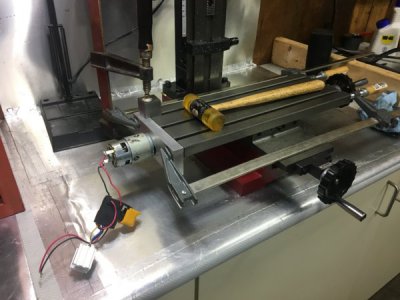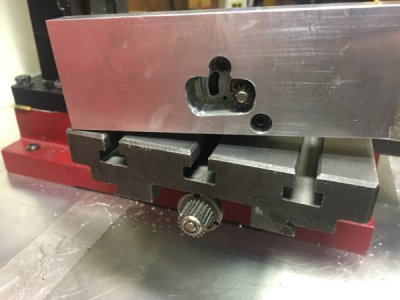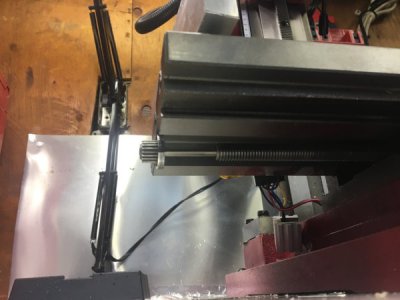- Joined
- May 14, 2013
- Messages
- 104
Choo choo! All aboard the fail train! Alternate thread title: How NOT to make a power feed for your mini-mill.
After lovingly flycutting that aluminum blank nice and square and smooth, I applied my poorly thought out power feed adapter design to it and have learned much.
What did not go well, what I need to learn



Onwards and upwards.
After lovingly flycutting that aluminum blank nice and square and smooth, I applied my poorly thought out power feed adapter design to it and have learned much.
What did not go well, what I need to learn
- I have little practical understanding of gears and how they work, how you apply gearing concepts to design, etc
- I did not take into consideration the torque an electric motor produces, and the flex of materials involved (need to make an end piece for the feed screw, right now it is free floating - pretty sure I'll need a boring bar for this)
- I did not take into consideration the function of the planetary gear set in a drill - the motor spins at 20k rpm, this is unsuitable entirely for directly coupling to a feed screw.
Apparently.
- As mentioned in that other thread, my vises and technique do not lend themselves to retaining surface finish
- Completely botched (horrors) milling out the inner open area where the gears mesh - should have taken more time and aligned the vise correctly.
- Discovered that the z-axis has developed (or I've just noticed) a 'skip' near the top of the travel. I was flycutting the top of the blank, slowly getting the zero, when it grabbed and jumped down 1/8", slamming the cutter into the side of the work. Whups. Ended up physically touching the cutter to the top, wiggling by hand, then moving fine feed down and locking. i.e. not under power
- Still need to learn how to use the parting tool on the lathe. I learned flycutting, I can learn this, too.
- Measuring pre-existing holes (i.e. the threaded mount hole on an electric motor housing) precisely is something I need to learn how to do properly
- Drawing something out beforehand is a must
- I completely underestimated the power draw of that motor - blew two (old) computer power supplies up. Ended up using the car battery charger.
- Flycutting went really well, for the most part, surface finish and speed of cutting in aluminum was great
- Drilling out the feed screw in the 4-jaw also went well
- Using Loctite 609, while cold, requires at least 24h. 1hr 'fixturing' time won't cut it. Possibly due to too large a gap.
- My filing technique is improving!
- The importance of sawing something as close as possible - much care taken during sawing can save a lot of machining time
- Adding that swivel light has been amazing
- Figure out gear ratios, make/find a large gear (or just get an appropriately geared motor)
- Do a legit cad drawing and print it out
- Do a reset of the gibs after those crashes



Onwards and upwards.

